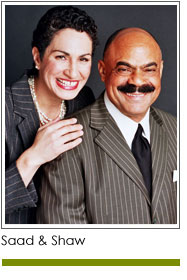 Will a fundraising plan solve your fundraising challenges? Will your organizational culture change? Will your board suddenly become more involved? What about funding: will the money and resources you need miraculously appear?
Will a fundraising plan solve your fundraising challenges? Will your organizational culture change? Will your board suddenly become more involved? What about funding: will the money and resources you need miraculously appear?
Creating fundraising plans for our clients is one of our core services. We invest time learning each organization, its culture, assets, position in the marketplace, challenges and successes. And we get to know the people. We combine our learnings and experience to create a fundraising plan. While we wish a plan could magically bring resources to a nonprofit, the truth is that it won’t. A plan is only as valuable as the people who implement it.
Here are three things we have learned about the important role of a fundraising plan.
1. A fundraising plan is a management tool. It includes strategies, roles and responsibilities, timelines, gift charts and guidelines that guide fundraising. The plan provides structure and serves as a reference tool that fundraising team members use to help hold each other accountable. The plan can encourage consistent progress, and the strategic use of often-limited resources. However, these won’t happen until the plan is used. And that takes time.
During the process of growing from one level to another, nonprofits may struggle with day-to-day operations. They may find it difficult to invest time in planning while simultaneously sustaining current activities. By necessity this can make the implementation of a fundraising plan a longer term process than may have been anticipated.
2. People make the world go round. Having a fundraising plan can help your organization determine if you have the right people in the right positions. The roles and responsibilities included in a fundraising plan can give board and staff members a deeper understanding of what is expected of them. These can also serve as a reference when hiring new staff or recruiting additional board members.
It is the people who will bring a plan to life. Each person involved with your fundraising needs to believe in your organization. Collectively your fundraising team needs to have a strong mix of fundraising skills, experience and connections. While one person may be a “rain maker” for your organization, we recommend building a team so your organization isn’t dependent upon any one person or relationship for its financial health.
3. Willingness is the key. At the heart of all successful fundraising is willingness. Willingness takes many organizations through the first phase of their organizational growth. During this time a formal fundraising plan may not be in place, nor is it always necessary. The trick is to sustain willingness and creativity, and to grow a culture and the structures that will support your organization as it grows. A fundraising plan is one step in the process.
It may take time to experience the benefits of working from a fundraising plan. It could take 18 months to three years to truly grow into a plan. But once the people, systems and relationships are in place they can be refined and expanded as you grow.
Copyright 2017 – Mel and Pearl Shaw
Mel and Pearl Shaw are authors of four books on fundraising available on Amazon.com. For help growing your fundraising visit www.saadandshaw.com or call (901) 522-8727.











